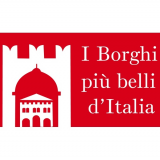
 I borghi più belli d'Italia
I borghi più belli d'Italia
Italian little Italies: Montecassiano, the land of brotherhoods
- WTI Magazine #104 Jun 16, 2018
-

 I borghi più belli d'Italia
I borghi più belli d'Italia
The borgo of Montecassiano dominates the hill between the Monocchia river and the Potenza river. Its medieval identity is enclosed within the high walls, which still surround the old town, that were built starting from 1437, and that separate it from more recent buildings. The urban structure developed in concentric streets that followed the conformation of the hill, ending in the main square with the Castle of Santa Maria in Cassiano which already existed in 1151.
Together with the current piazza Leopardi, where the castle courtyard was located, the ancient nucleus was made up of the parish church of Santa Maria and the overhanging fortified tertiary of the Girone, the current Piazza del Girone. At the entrance of the borgo stands the 13th century Oratory of San Nicolò, which has a bell dating back to 1382 and, inside, 15th century frescoes by the Umbrian-Marche school. Passing through the crenellated Porta di Santa Croce (today Cesare Battisti), you go up to the central piazza Leopardi where the Palazzo dei Priori, the seat of the Municipality, has been rebuilt by Antonio Lombardo in 1467.
Today’s appearance is the result of the restoration of 1938, which restored the battlements and created the large arch connecting with Palazzo Compagnucci. In the upper part of the façade of the Palazzo dei Priori there are three elegant mullioned windows separated by a sculpted column, while in the lower part some octagonal pillars support the loggia consisting of five round arches. Inside, in the Sala Consiliare, there is a Madonna on the throne between Saints and angels musicians of Johannes Hispanus (1506) and a Dream of Jacob by G. Buratto (17th century). Close to the square are the late neoclassical palace Ferri and the architectural complex of the former convent of the Augustinians, inside which the tavern of San Nicolò with annexed tasting center is located.
The nearby collegiate church of Santa Maria Assunta dates back to the 12th century, but was rebuilt by the monks of the Abbey of Fiastra in 1234 and subsequently modified by Antonio Lombardo. Particularly noteworthy is the terracotta façade with rose window, flanked by a sturdy bell tower adorned with terracotta. Inside you can admire the splendid glazed terracotta altar by Mattia della Robbia, depicting the Madonna with Child and Saints, the table by Giacomo da Recanati with the Coronation of Mary and Saints, the organ of the Callido of 1775 and, in the sacristy, the stationary cross of Lorenzo d’ Ascoli (1414) and the reliquary of the Holy Cross of the XIV century. The itinerary continues with the nearby church of San Marco, which was completely renovated in the eighteenth century, where you can find paintings from the seventeenth century and an Archaeological Collection rich in Picenian finds.
Near Porta Diaz is the seventeenth-century church of San Giacomo, which today houses the Brotherhoods. On the main altar there is a beautiful fresco of the first half of the sixteenth century depicting the Madonna on throne with Child and attributed to Vincenzo Pagani. Within the city walls, three historical courtyards have recently been recovered: the cloister of the Augustinians, where the tasting centre is located; the garden of San Giacomo, a true corner of peace and serenity; and finally the courtyard of the monastery of the Poor Clares, which boasts a building system dating back to the twelfth century. All three courtyards are at the service of the taverns on the occasion of the Palio dei Terzieri. Going into the city centre from Porta San Giovanni, you will find a staircase (via Roma) from which you can reach the recently restored church of San Giovanni Battista, seat of the Museum of Sacred Art and part, with the former convent of the Poor Clares (now middle school), of the largest urban complex in the city centre.
The name
The borgo is mentioned as Castrum Montis Sancte Mariein some oldest historical documents dated 1151. In the following century it became Montis Sancte Marie in Cassiano. According to some historians, there is a relationship between the ancient Cassiani family, at the origin of the place name, and the even older Cassia Orestina road mentioned in a stone found in 1602 and that dates back to the first century AD. Therefore, there has been a historical continuity here between the Augustan Age and the High Middle Ages.
Local products and dishes
The sughitti, kind of sweet polenta with must, corn flour and walnuts. It is a typical dessert of the peasant civilization celebrated during October festival.
In addition to vincisgrassi, you must try beans with pork stews and tajulì pilusi, hand-made tagliatelle with water, flour and salt, excellent with the duck sauce.This dish can be tasted on September 1st during the feast of Sant’ Egidio.
Among second courses, rabbit in potato and stockfish with potatoes.